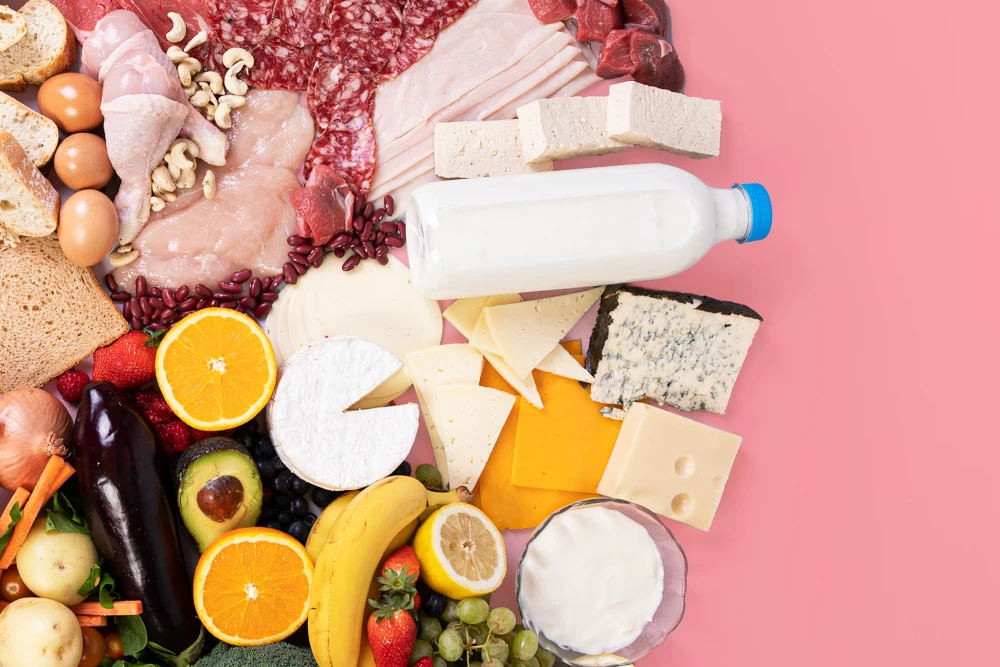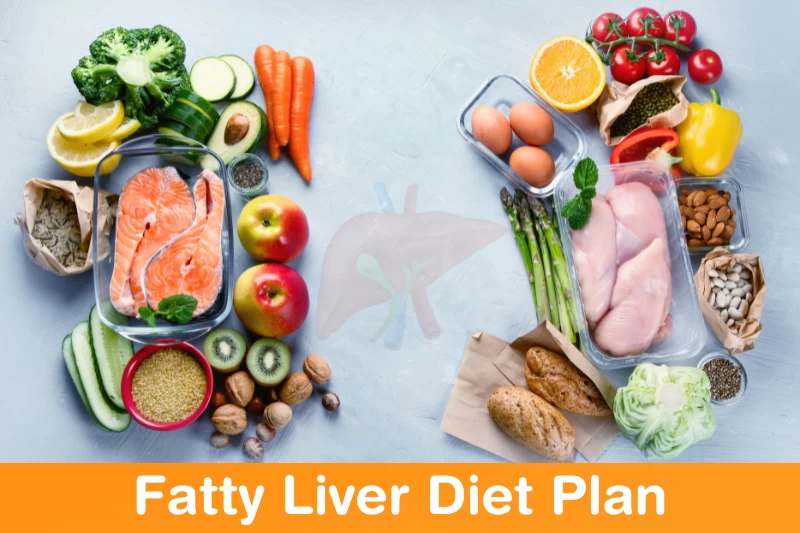
- 25th March 2023
Table of Contents
What is a Fatty Liver Diet?
Managing portion sizes is an essential part of a fatty liver diet, especially if you are trying to lose weight. Overeating can cause your liver to accumulate more fat and worsen your condition. Therefore, it is important to eat smaller portions of healthy foods throughout the day. One way to manage portion sizes is by dividing your plate into different sections. You can fill half of your plate with vegetables or fruits, one-fourth with lean protein like chicken or fish, and one-fourth with whole grains like brown rice or quinoa. This will ensure that you are getting all the necessary nutrients in appropriate amounts. Another way to control portion sizes is by using smaller plates and utensils. This will trick your brain into thinking that you are eating more than you actually are. Additionally, try to pace yourself while eating, taking small bites and chewing slowly. It takes time for our brain to register that we are full, so slowing down can help prevent overeating and promote better digestion.
Step 1: Understand Portion Sizes
When it comes to managing your portion sizes on a fatty liver diet, the first step is to understand what an appropriate portion size actually looks like. Many people underestimate how much they should be eating, which can lead to overconsumption and weight gain. In general, a serving of protein should be about the size of your palm, while a serving of carbohydrates should be about the size of your fist. It's also important to pay attention to serving sizes listed on food labels. A package may contain multiple servings, so you'll need to multiply the amount of nutrients listed by the number of servings you consume in order to get an accurate picture of what you're eating. Additionally, keep in mind that restaurant portions are often much larger than what you would serve yourself at home. By taking the time to understand portion sizes and paying attention to what you're putting into your body, you can better manage your fatty liver and make progress towards a healthier lifestyle overall.
Step 2: Consider Calorie Counts
When it comes to managing portion sizes on a fatty liver diet, calorie count is an essential factor to consider. Understanding the number of calories in your meals can help you maintain a healthy weight and prevent further liver damage. A general rule of thumb is to consume fewer calories than what you burn each day. This will help you lose weight gradually and in turn, decrease the fat deposit in your liver. Foods that are high in calories should be consumed in moderation or avoided altogether. Processed foods and sugary drinks are high-calorie culprits that contribute significantly to obesity and fatty liver disease. Instead, opt for whole foods like fruits, vegetables, lean proteins, and complex carbohydrates. It’s also important not to restrict yourself too much when it comes to calorie intake. Consuming too few calories can lead to nutrient deficiencies and slow down your metabolism, making it harder for you to lose weight. Aim for a moderate caloric deficit of around 500-750 calories per day by incorporating more physical activity into your routine or reducing portion sizes gradually over time.

Step 3: Track Macronutrients
Step 3 in managing portion sizes on a fatty liver diet is to track macronutrients. Macronutrients are the three main nutrients that make up our food: carbohydrates, protein, and fat. By tracking these macronutrients, you can ensure that you are consuming the right amount of each and maintaining a balanced diet. Carbohydrates provide energy for your body but can also cause spikes in blood sugar levels. It is important to limit your intake of refined carbohydrates such as sugary drinks, white bread, and pasta. Instead, focus on consuming complex carbohydrates such as whole grains, fruits, and vegetables. Protein is essential for building and repairing body tissues. It also helps keep you feeling full longer than carbohydrates or fats. Good sources of protein include lean meats like chicken and fish, eggs, nuts, seeds, tofu, and beans. When tracking your macronutrient intake on a fatty liver diet it's important to consume enough protein but not exceed recommendations due to the high calorie content in some protein-rich foods.
Step 4: Monitor Alcohol Intake
Monitoring alcohol intake is crucial when managing portion sizes on a fatty liver diet. Cutting back or eliminating alcohol consumption can significantly reduce the risk of developing further liver damage. Alcohol contains high levels of calories, and excessive drinking can lead to weight gain, which is a risk factor for fatty liver disease. To monitor alcohol intake, it's essential to keep track of the amount and frequency of alcohol consumed regularly. One way to do this is by keeping a journal or using an app that tracks daily drinks consumed. Limiting alcoholic beverages to one drink per day for women and two drinks per day for men is recommended by health professionals. Additionally, it's important to choose lower calorie options when consuming alcoholic beverages. For example, opting for light beer or wine instead of sugary cocktails can help manage calorie intake while still allowing for social drinking occasions. By monitoring alcohol intake and making healthier choices, individuals with fatty liver disease can take control of their health and manage their portion sizes effectively.
Step 5: Choose Healthy Snacks
Choosing healthy snacks is an essential step in managing portion sizes on a fatty liver diet. Snacks should be low in fat, calories, and sugar. Some great options include fresh fruits and vegetables, such as carrots, cucumbers, apples, and berries. These foods are high in fiber and nutrients that can help promote weight loss and reduce inflammation. Another excellent option is nuts and seeds. They are rich in healthy fats that can help lower cholesterol levels while keeping you feeling full for longer periods. Choose unsalted nuts like almonds, walnuts or pistachios for the best nutritional value. Lastly, when choosing beverages to accompany your snacks, it's important to avoid sugary drinks like soda or juice. Instead opt for water or herbal tea with no added sugar or creamer. Staying hydrated helps flush toxins out of your body while reducing hunger cravings between meals. By following these tips for choosing healthy snacks on a fatty liver diet you will not only manage your portion sizes but also support liver health and overall wellbeing.
Conclusion: Benefits of Portion Control for Fatty Liver Diet
In conclusion, the benefits of portion control for a fatty liver diet are numerous. First and foremost, portion control helps to reduce caloric intake, which is crucial in managing fatty liver disease. By reducing calorie consumption, you can avoid excess weight gain and maintain a healthy body weight. Portion control also helps to regulate blood sugar levels by preventing spikes that can lead to insulin resistance and other complications. This is particularly important for individuals with type 2 diabetes or those at risk of developing the condition. Moreover, practicing portion control can help improve overall digestion by allowing the stomach to properly break down food without undue stress or strain. Proper digestion is key in maintaining good gut health and avoiding digestive issues such as bloating or constipation. Overall, incorporating portion control into your fatty liver diet plan can have a positive impact on your health in many ways. Not only does it promote healthier eating habits but it also aids in weight management and regulates blood sugar levels while improving digestion function for better absorption of nutrients from foods consumed daily.
